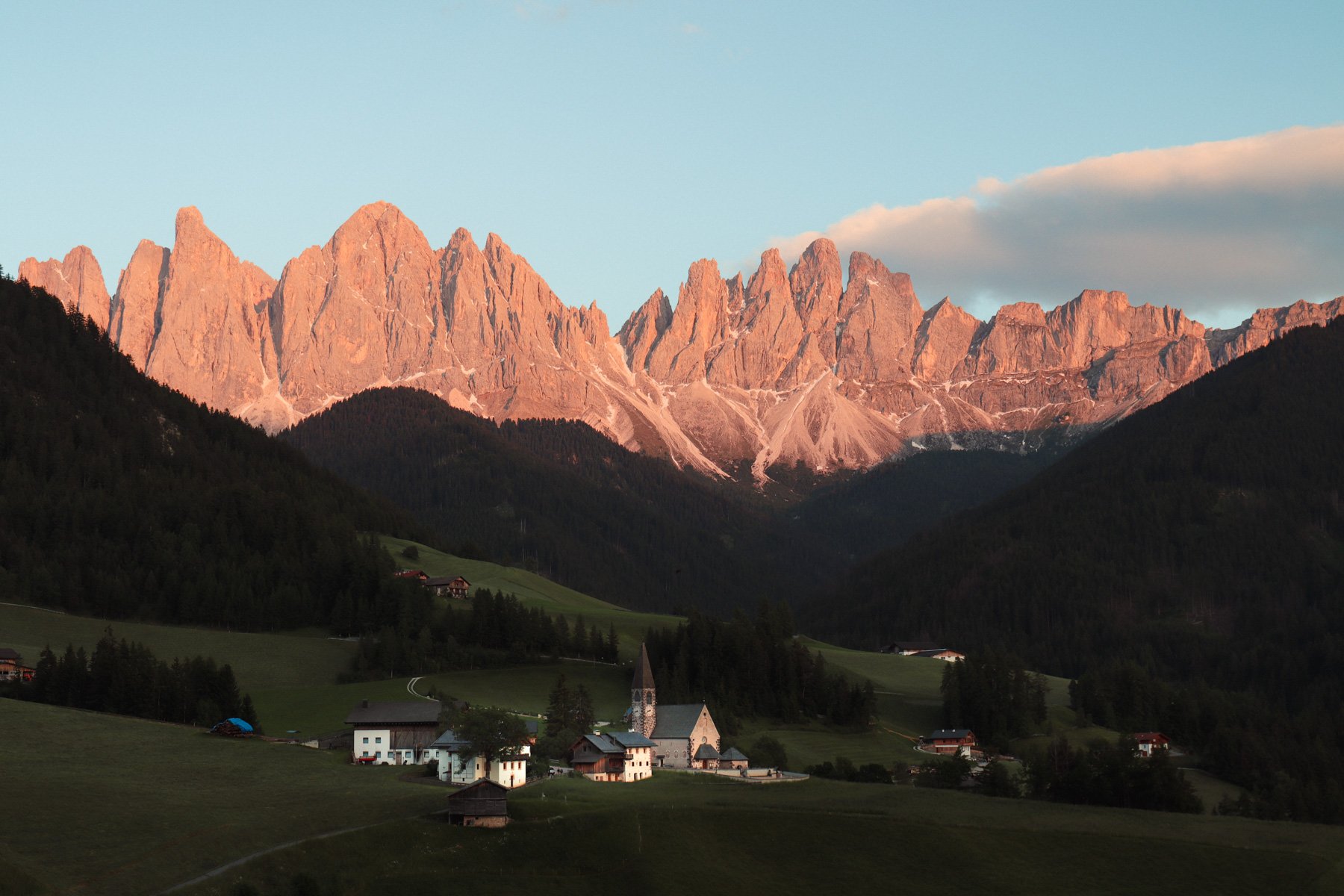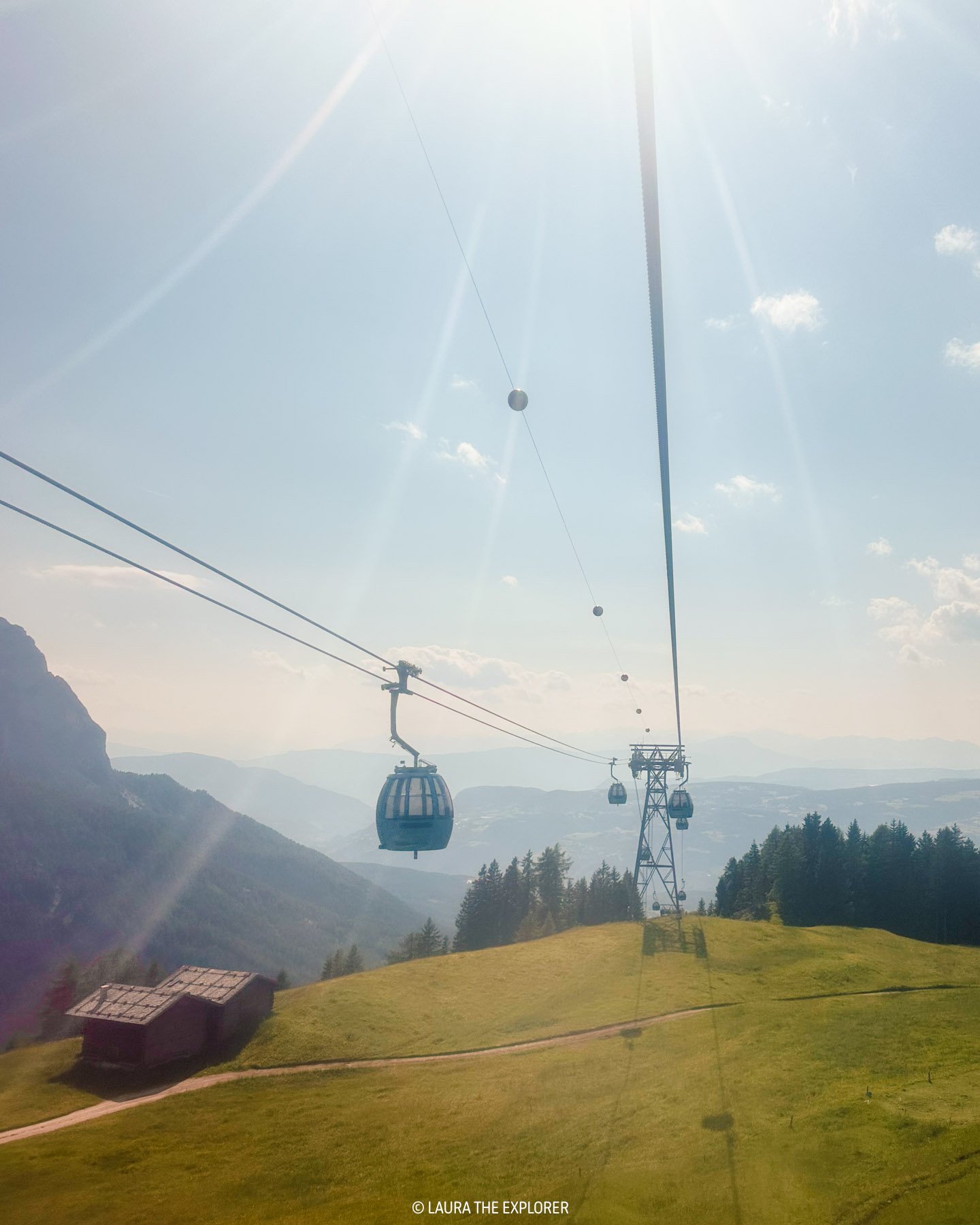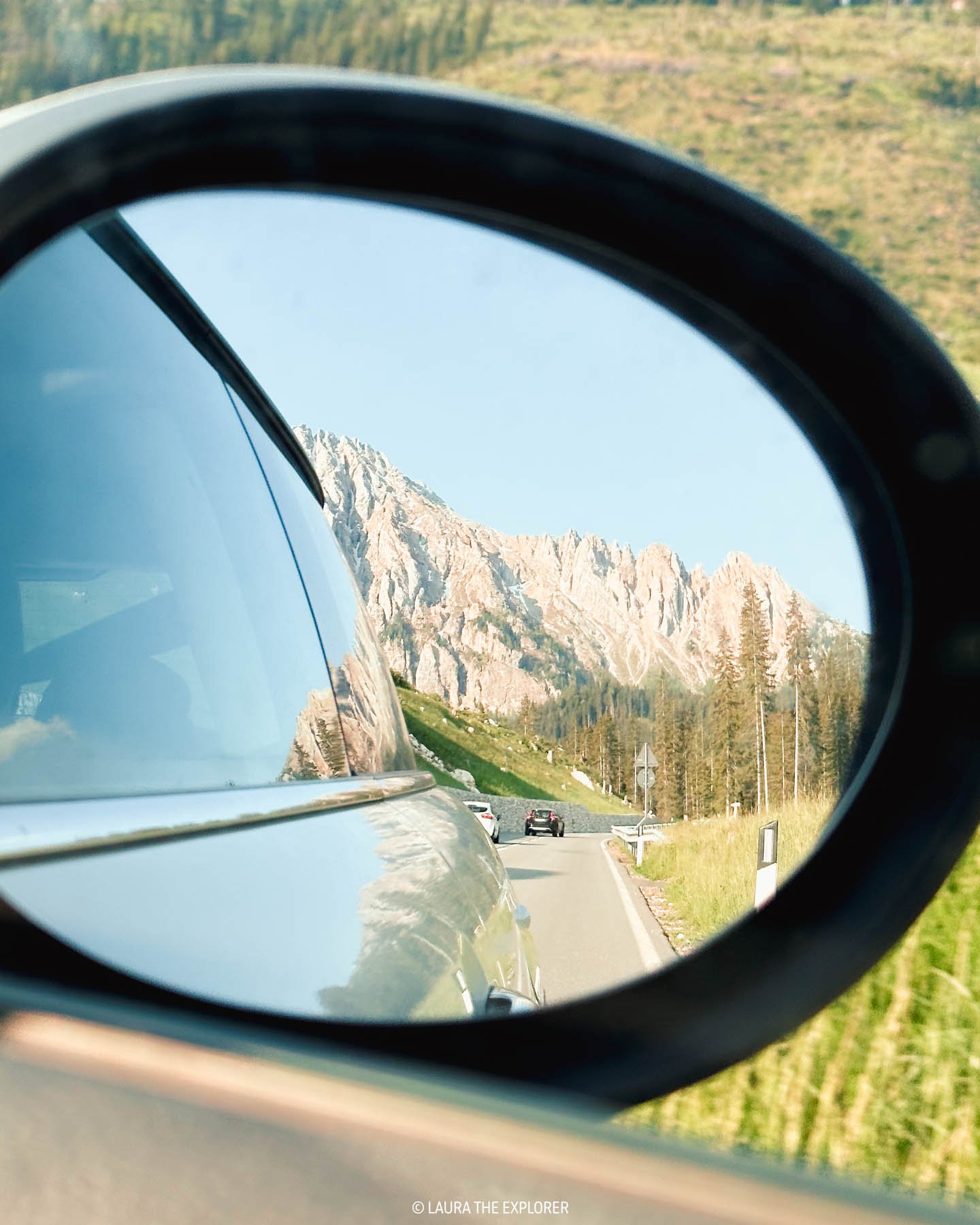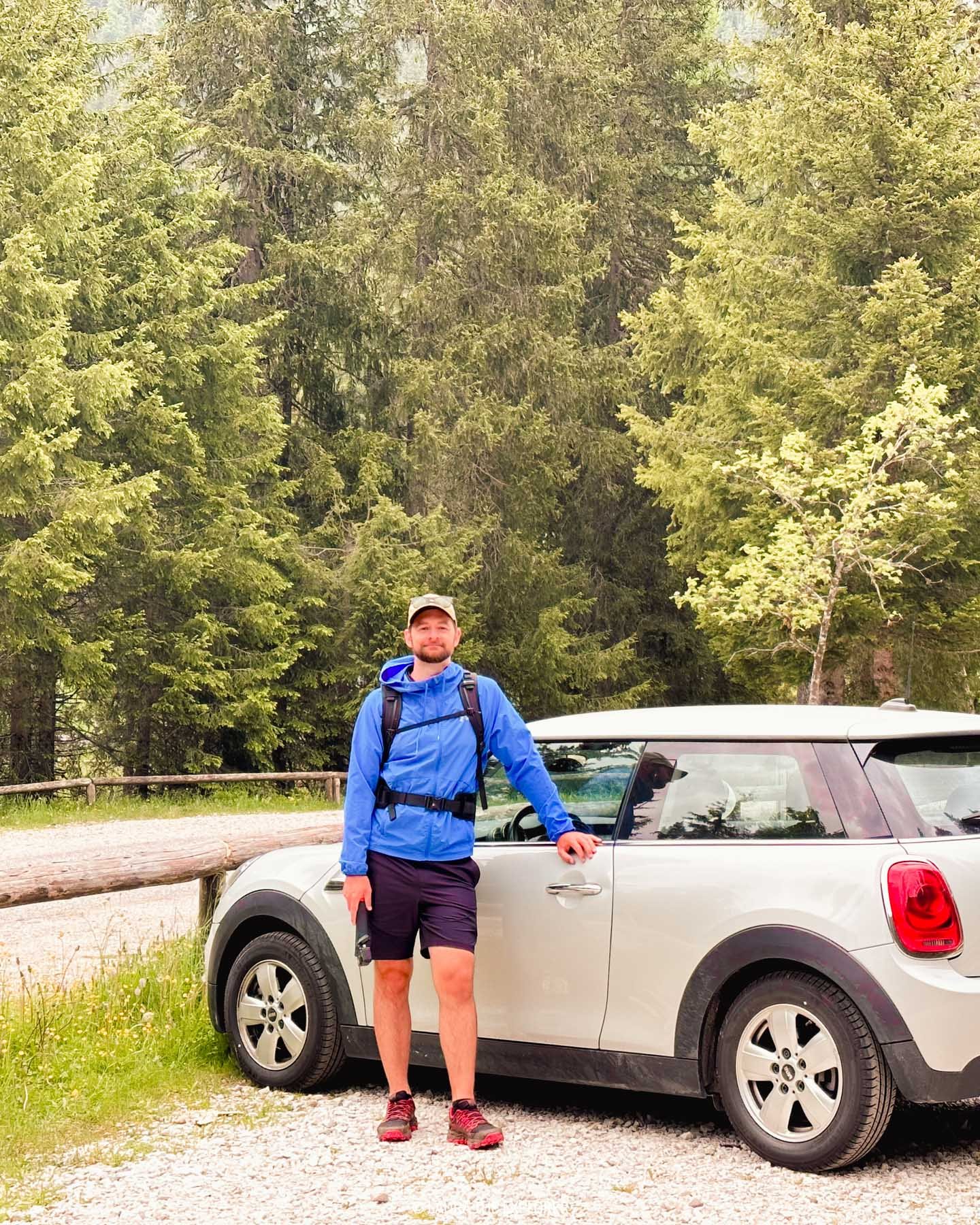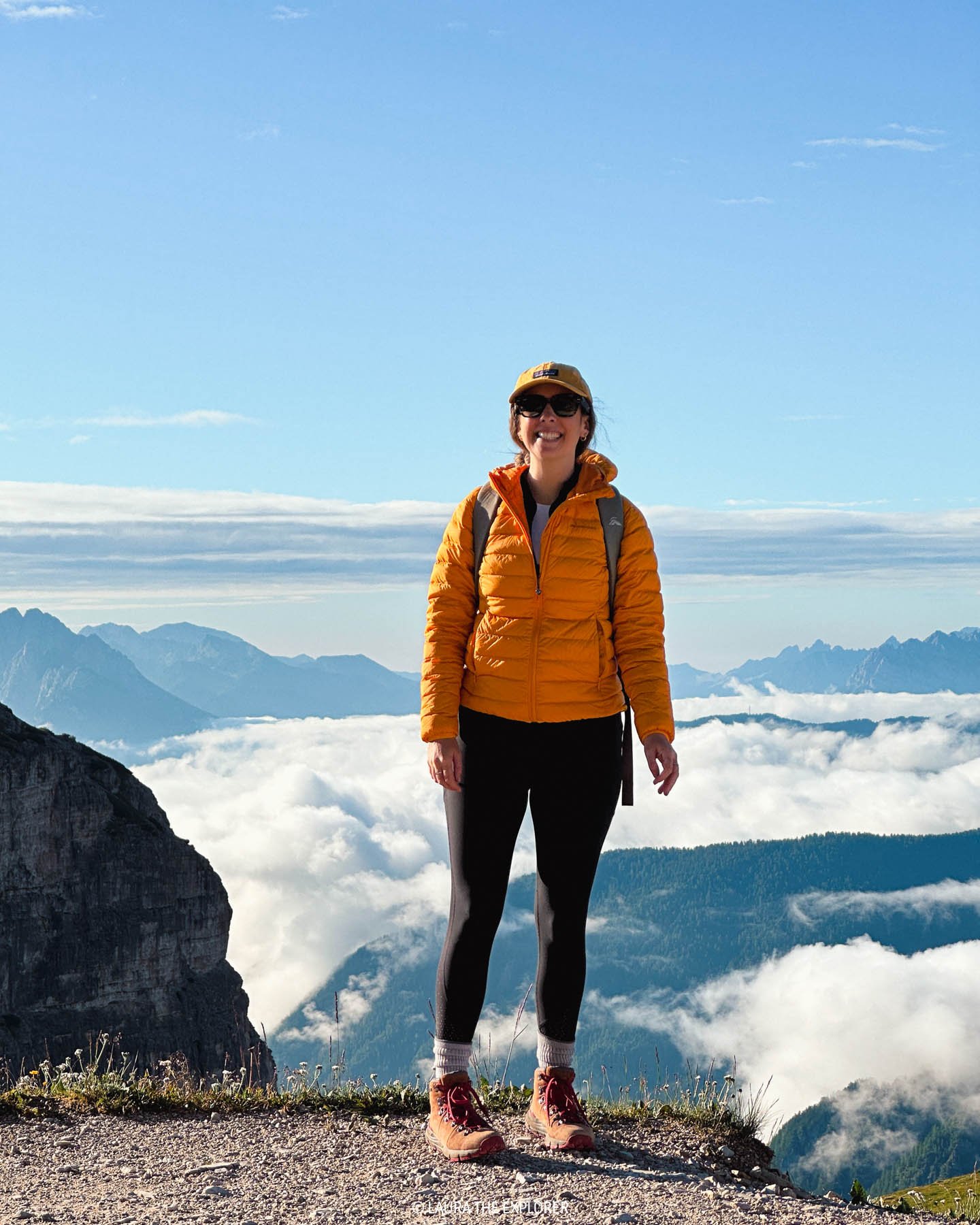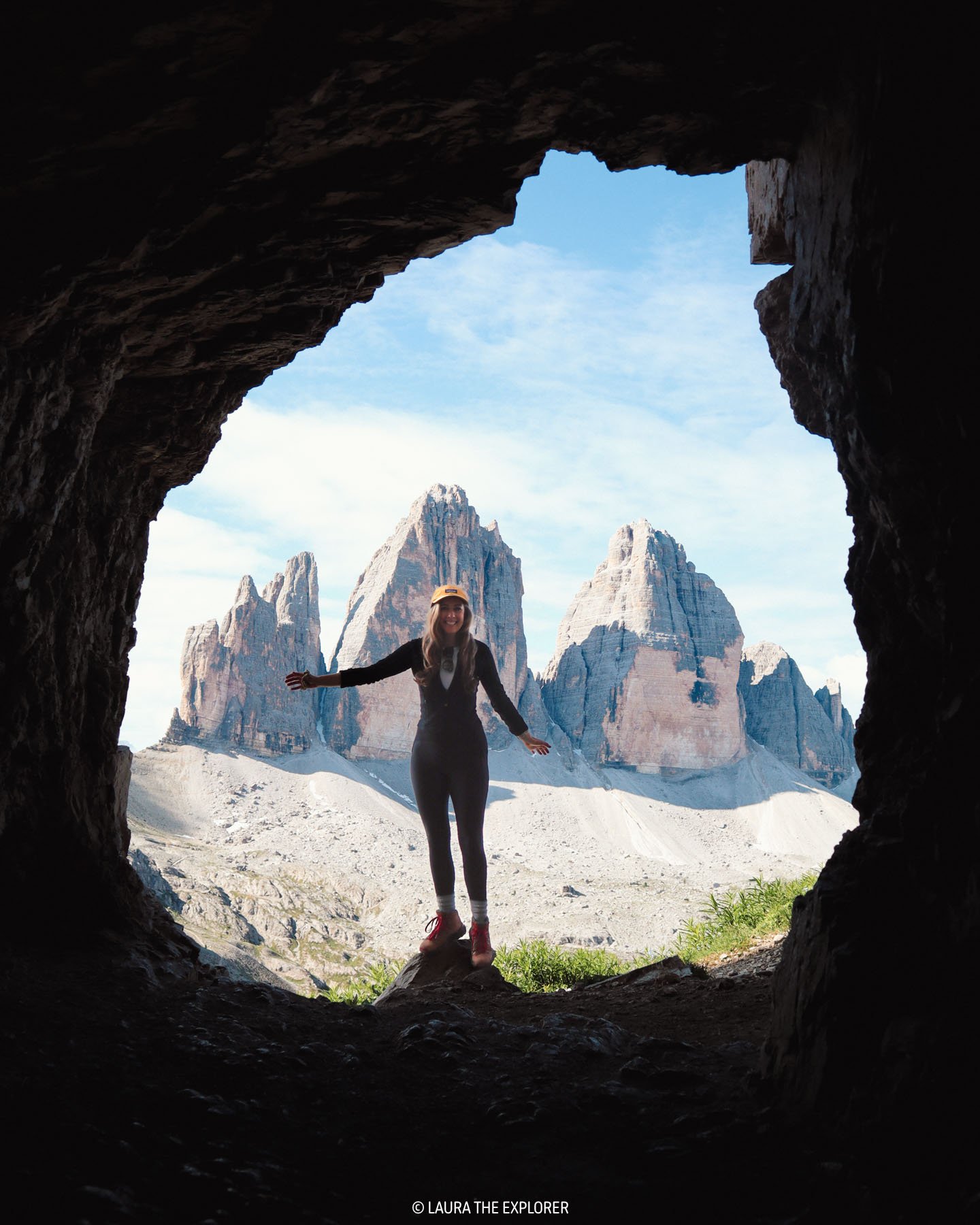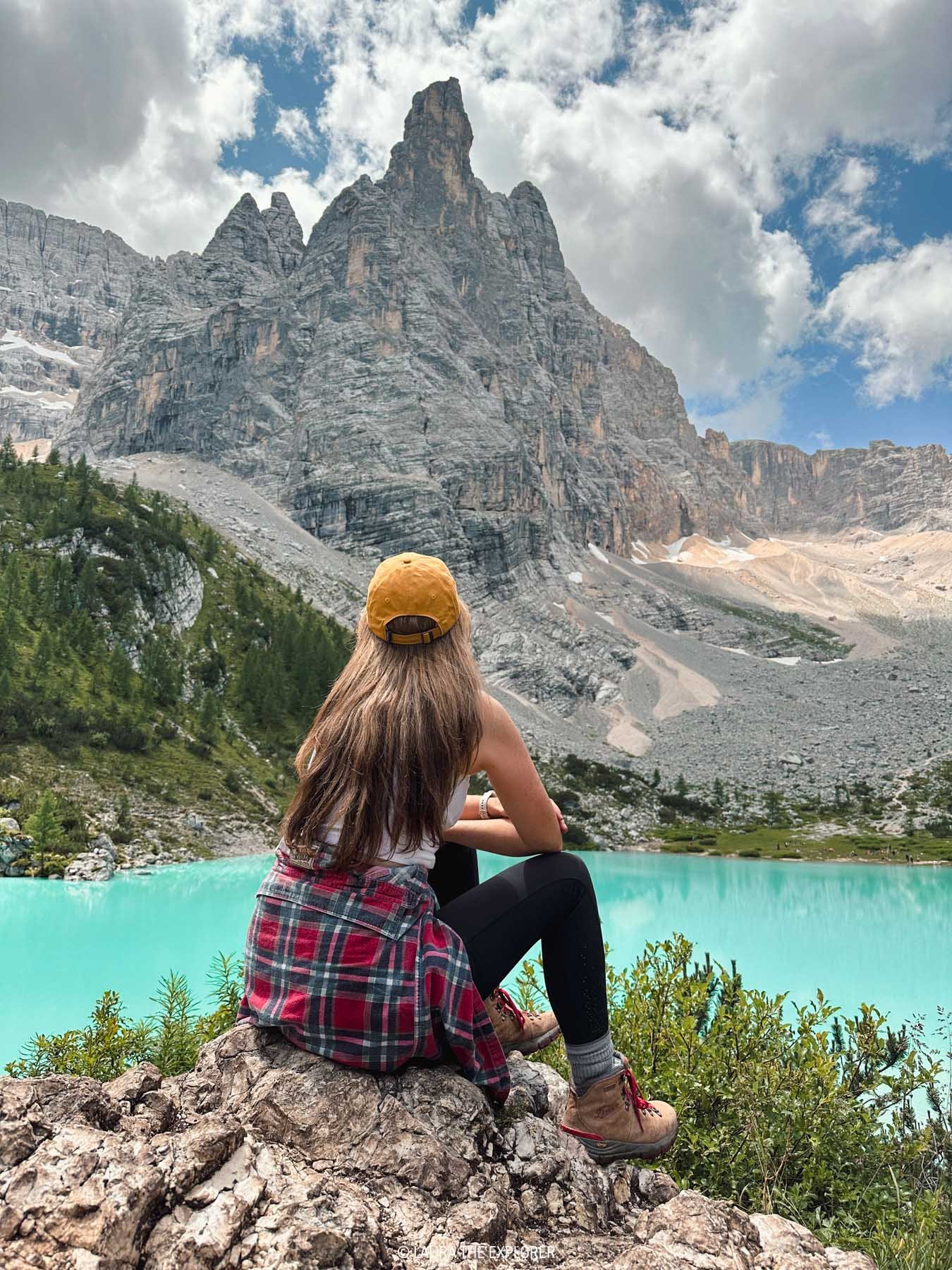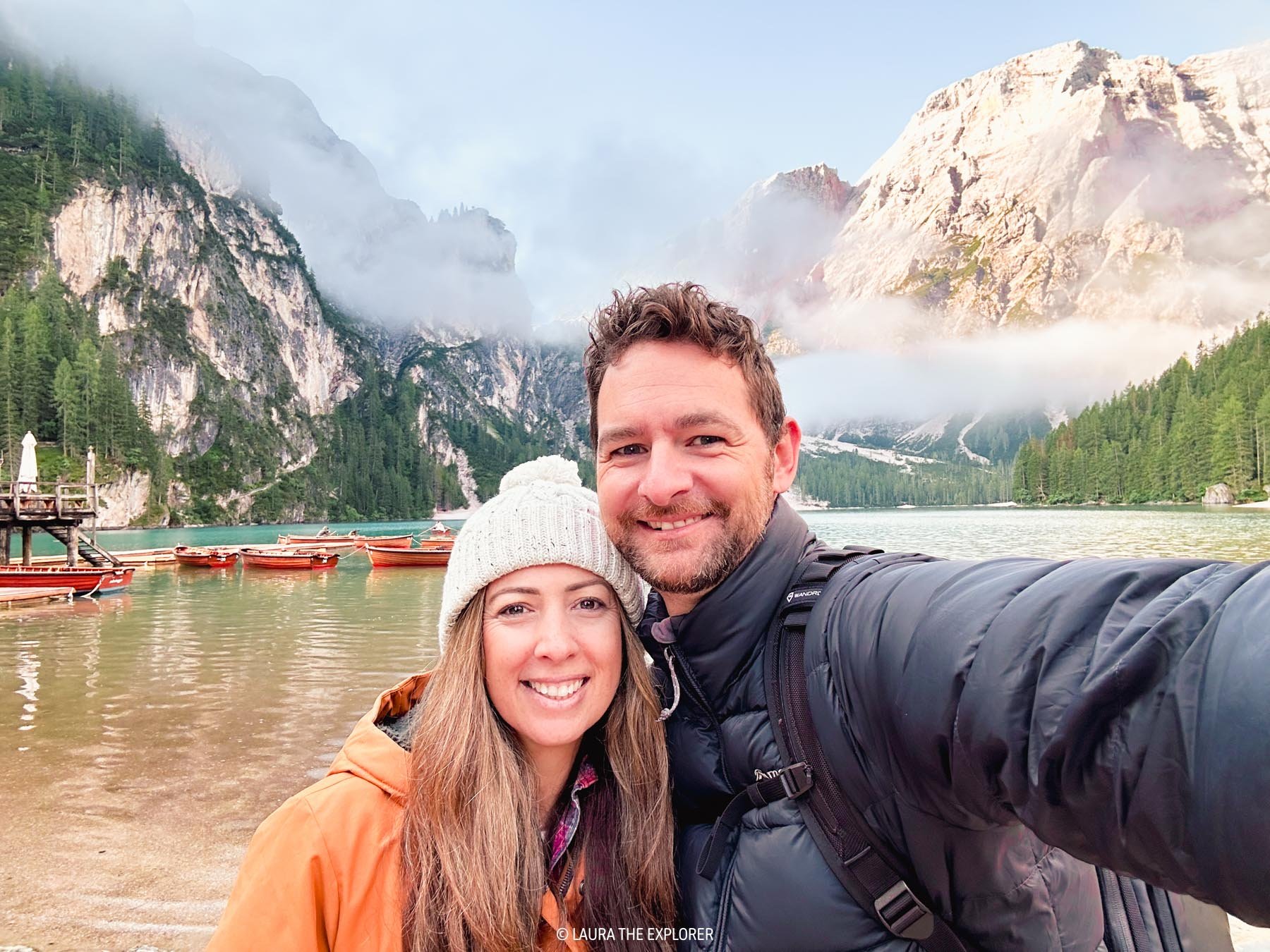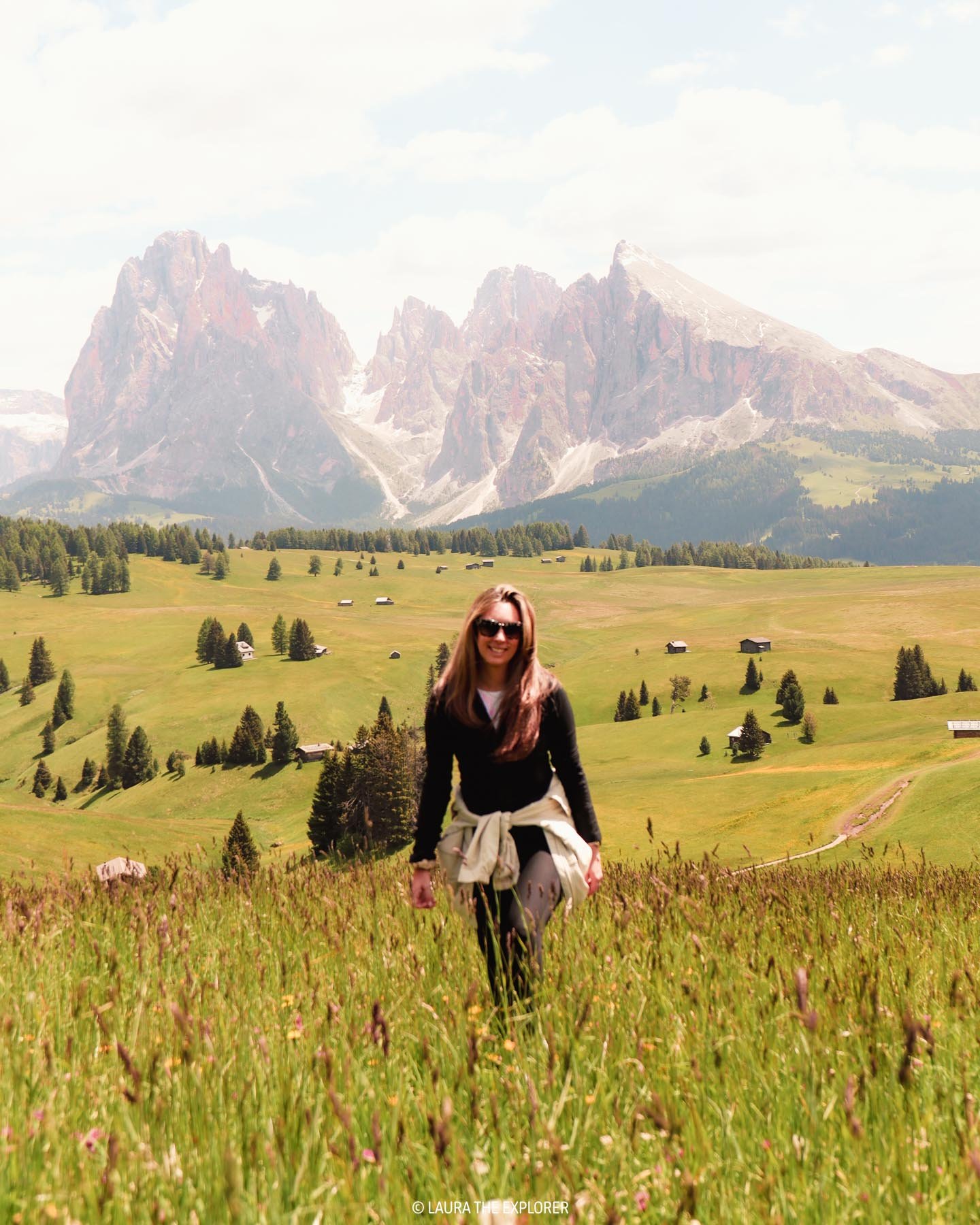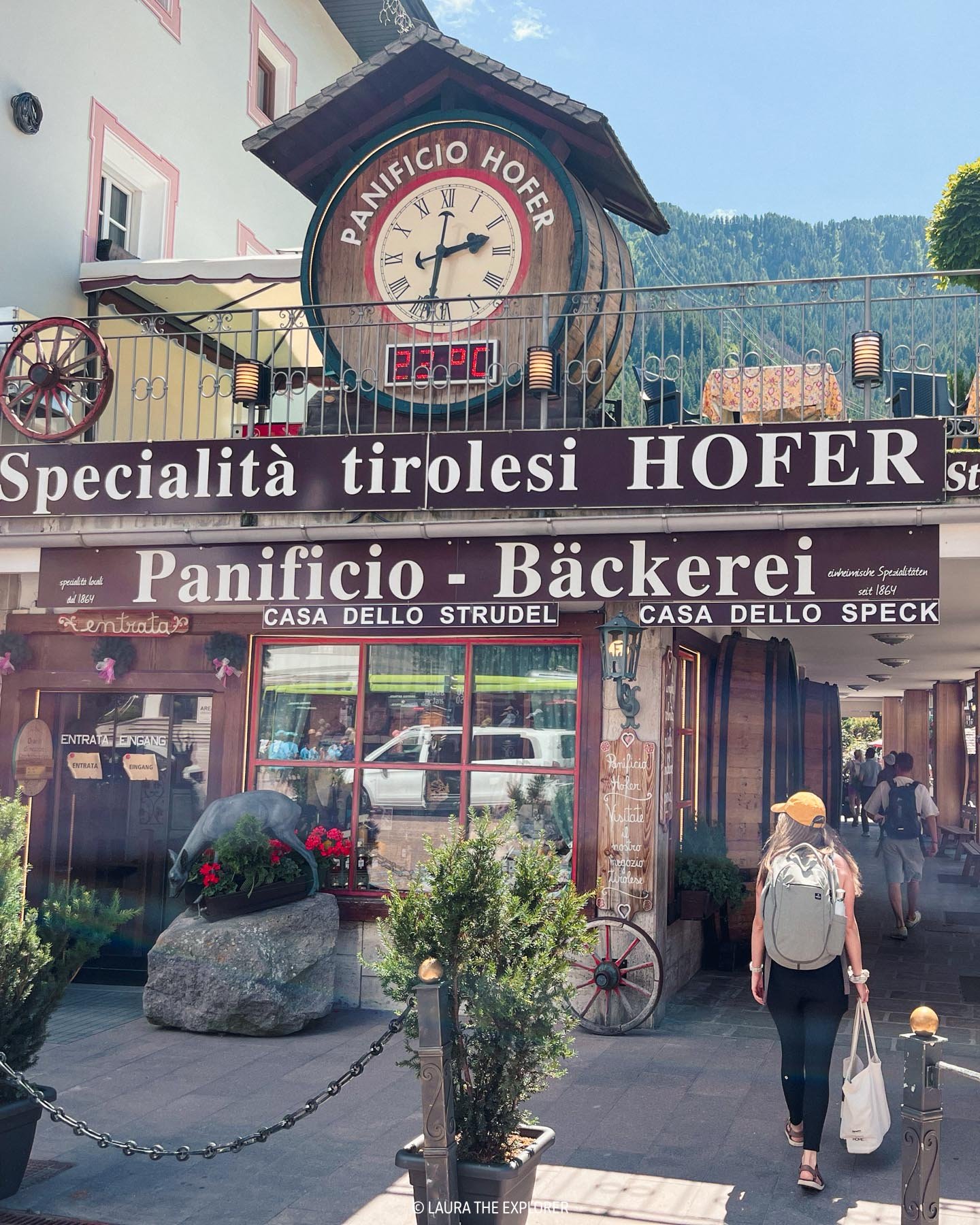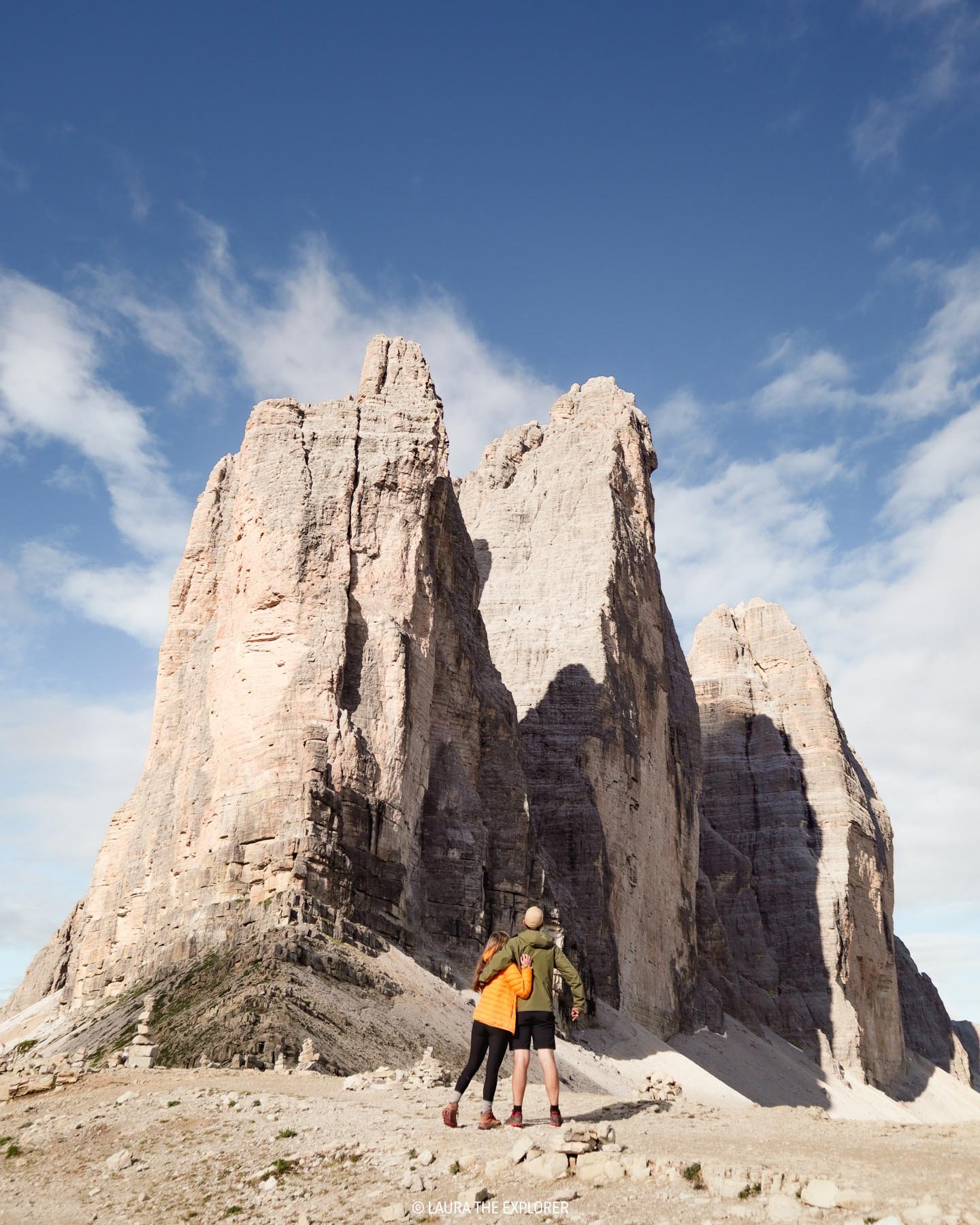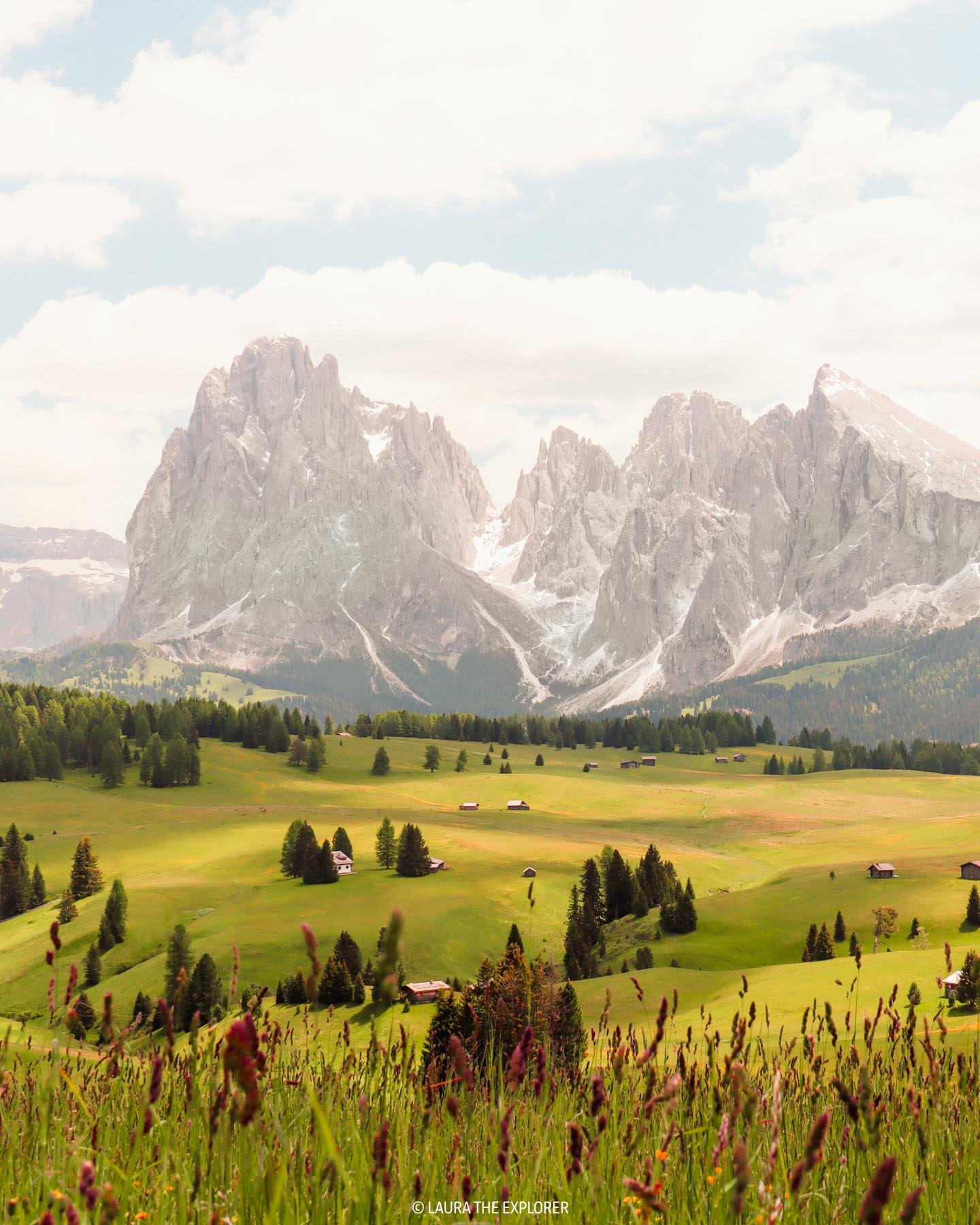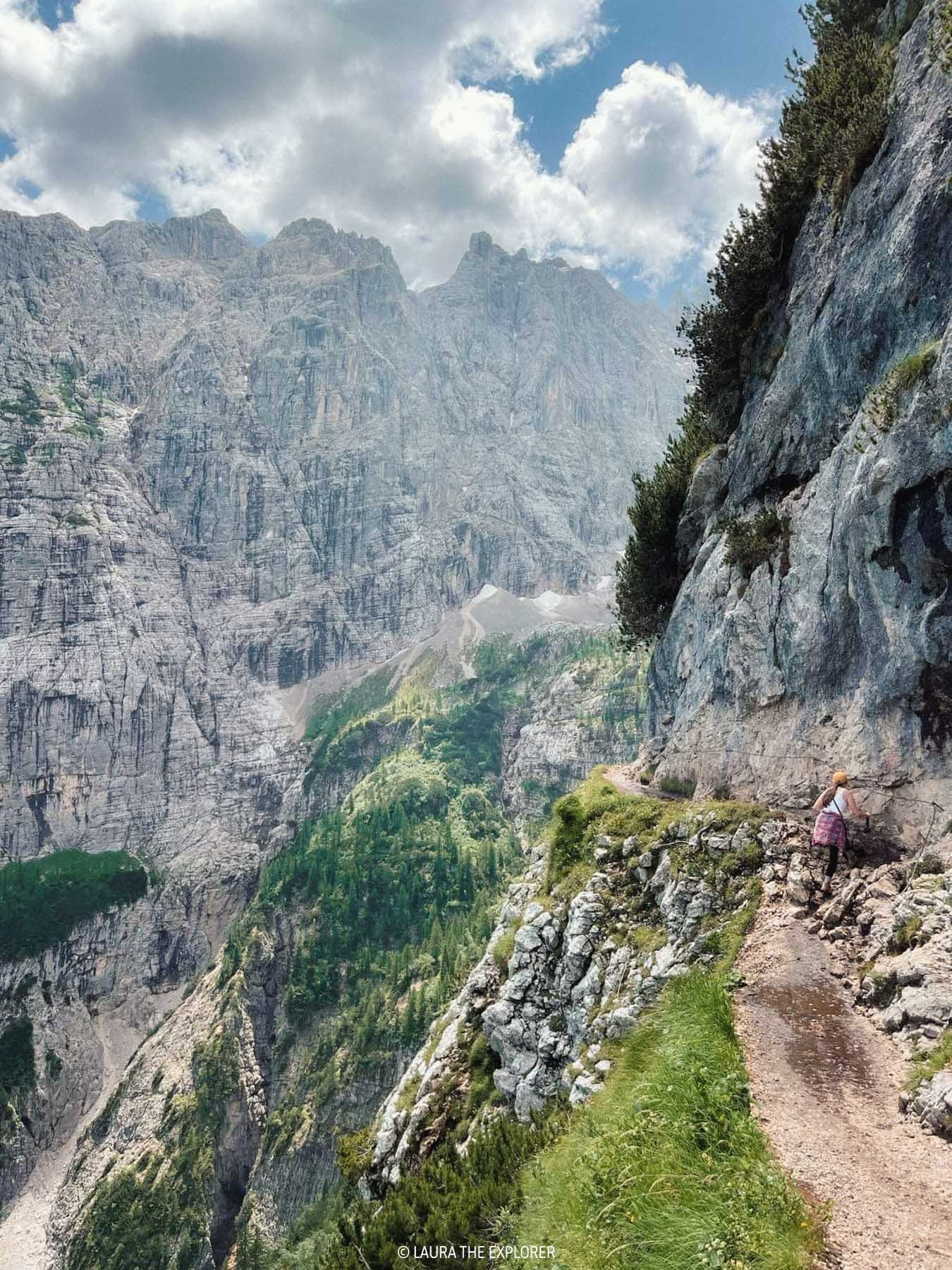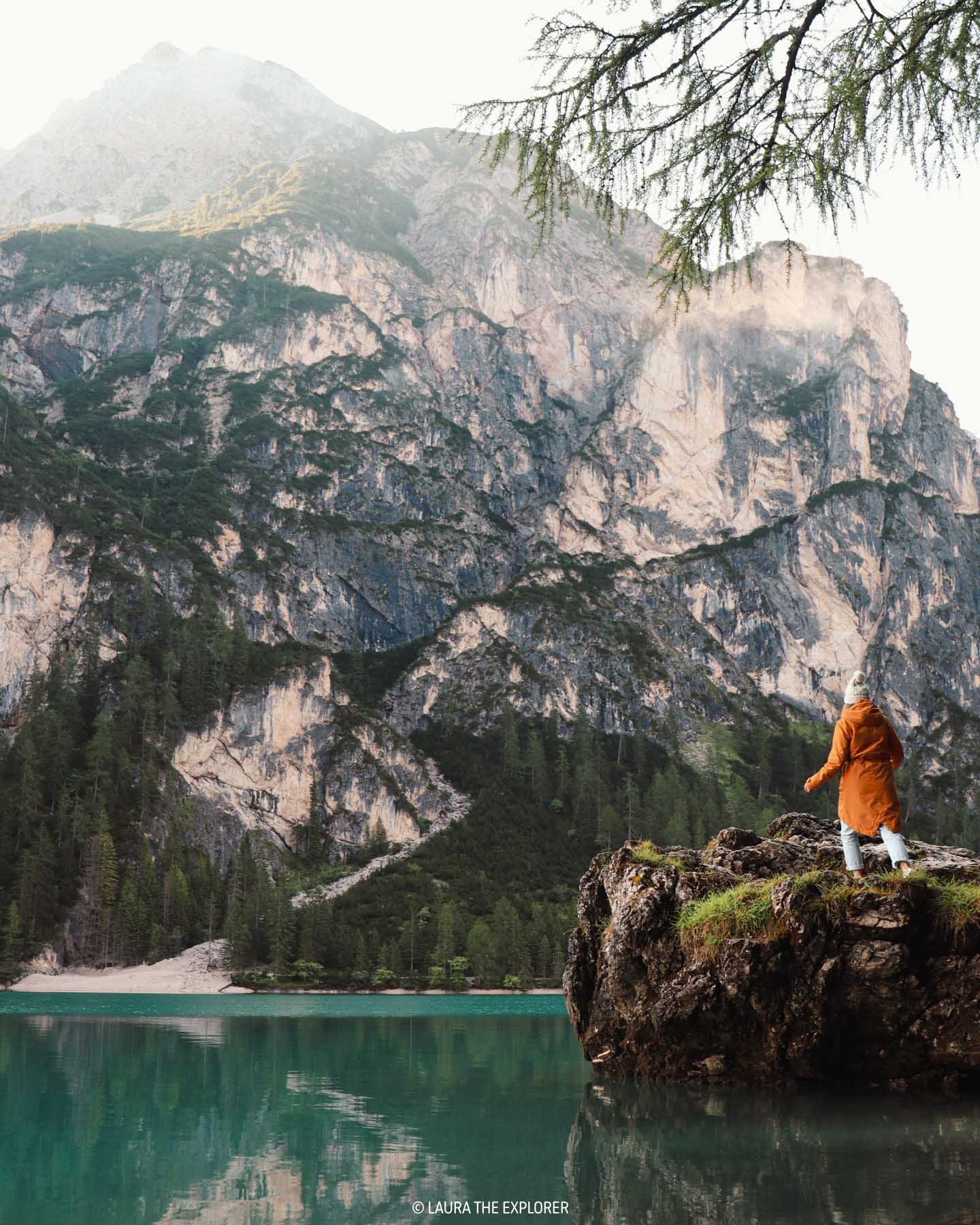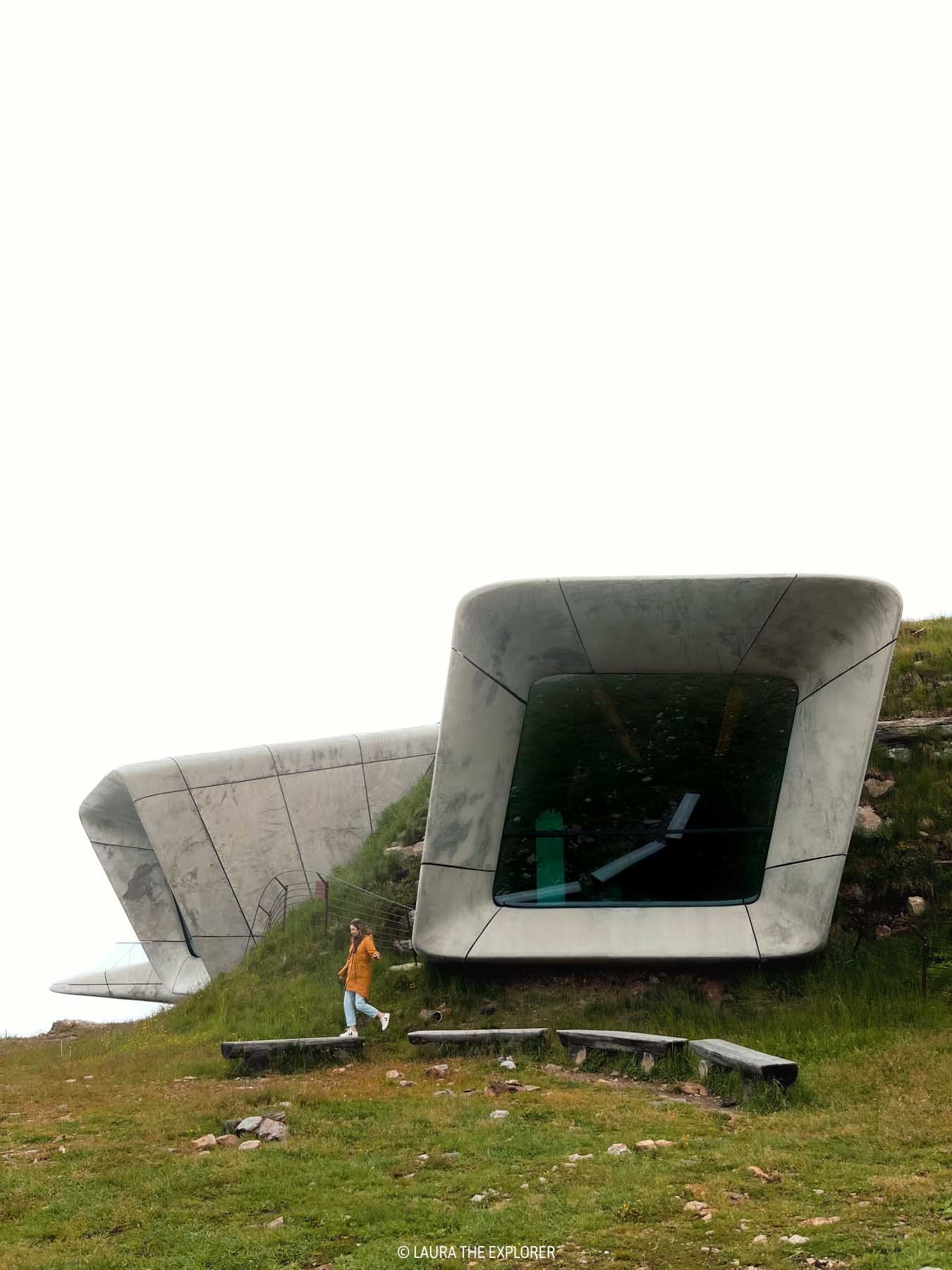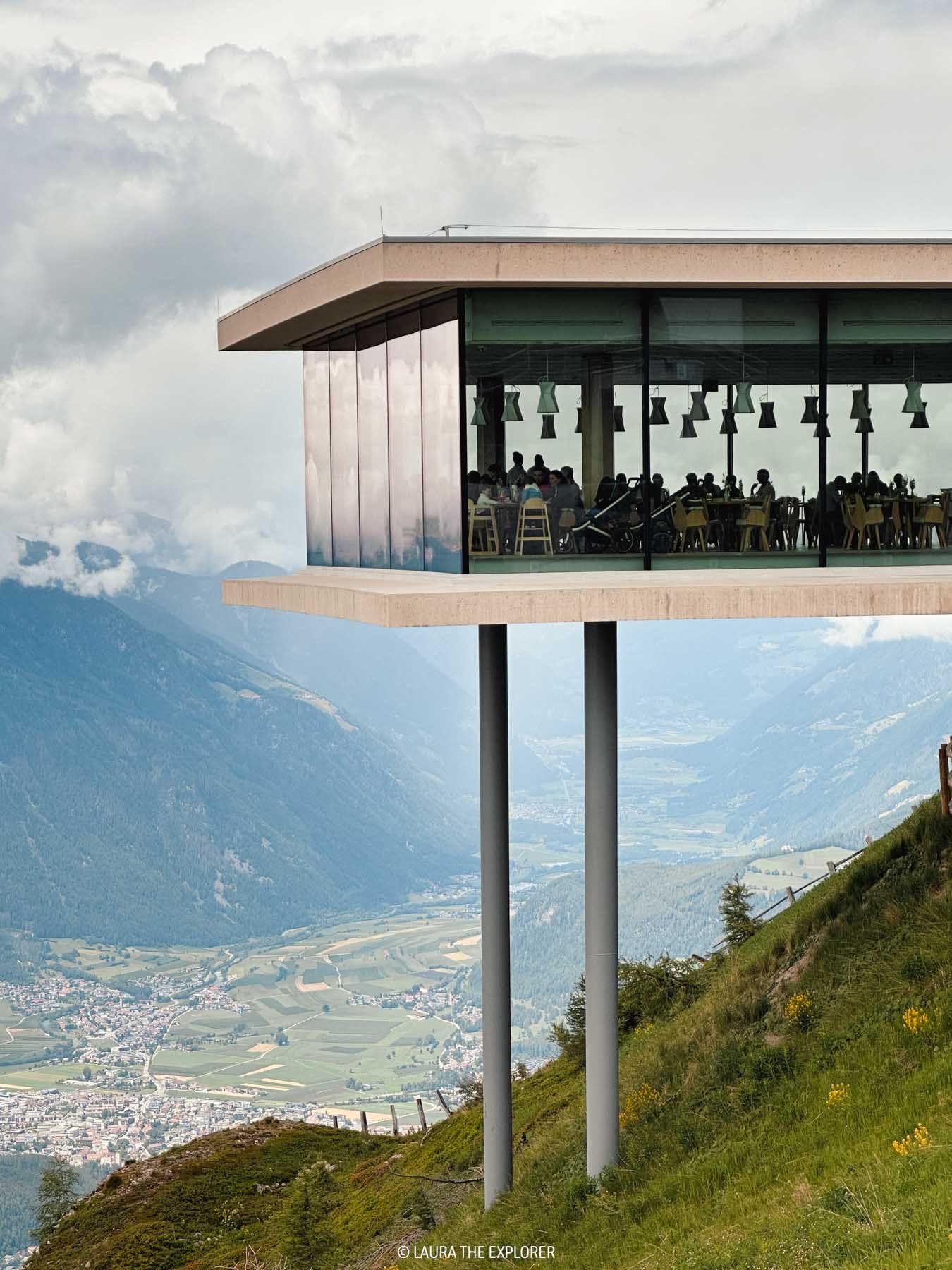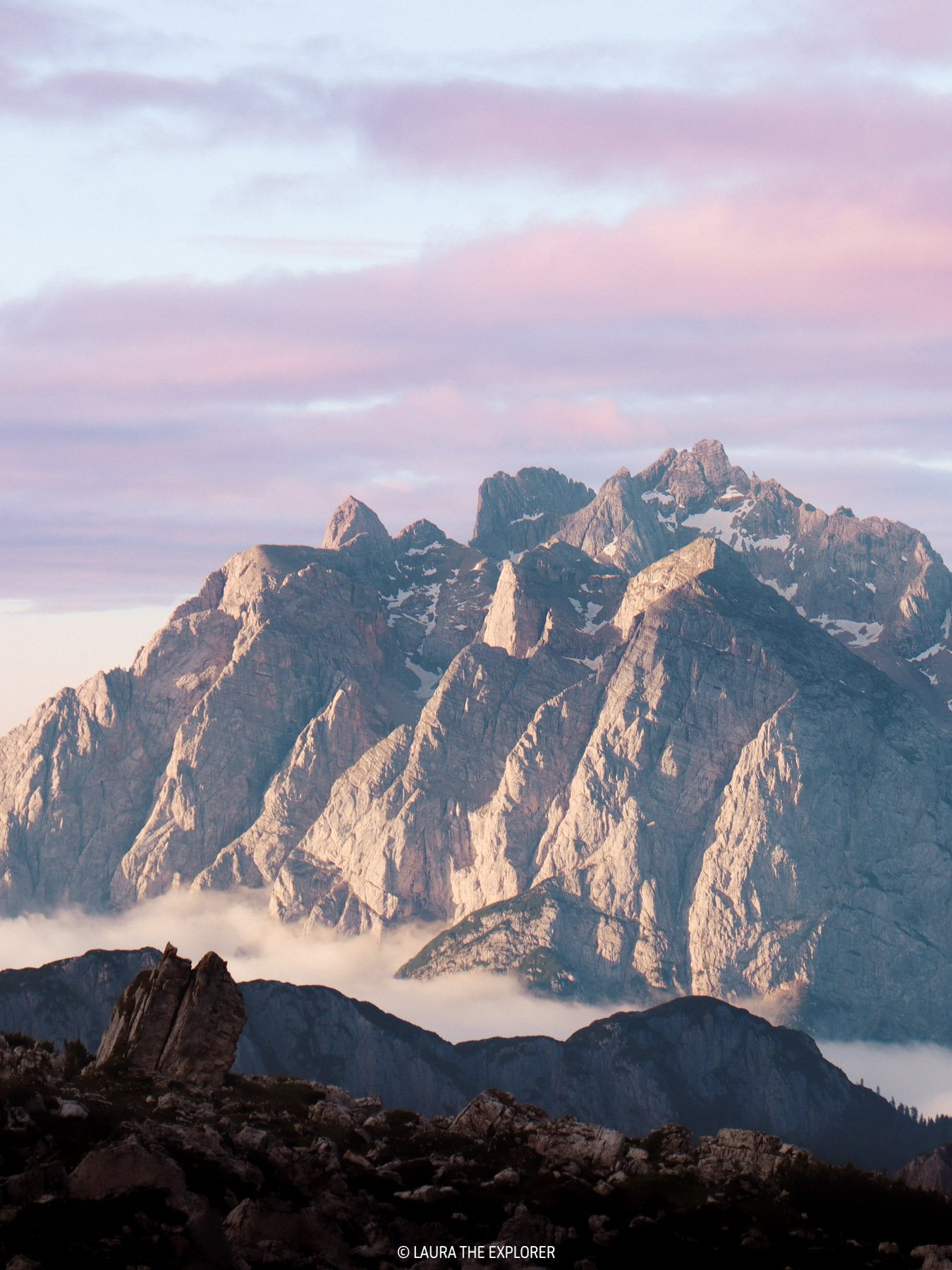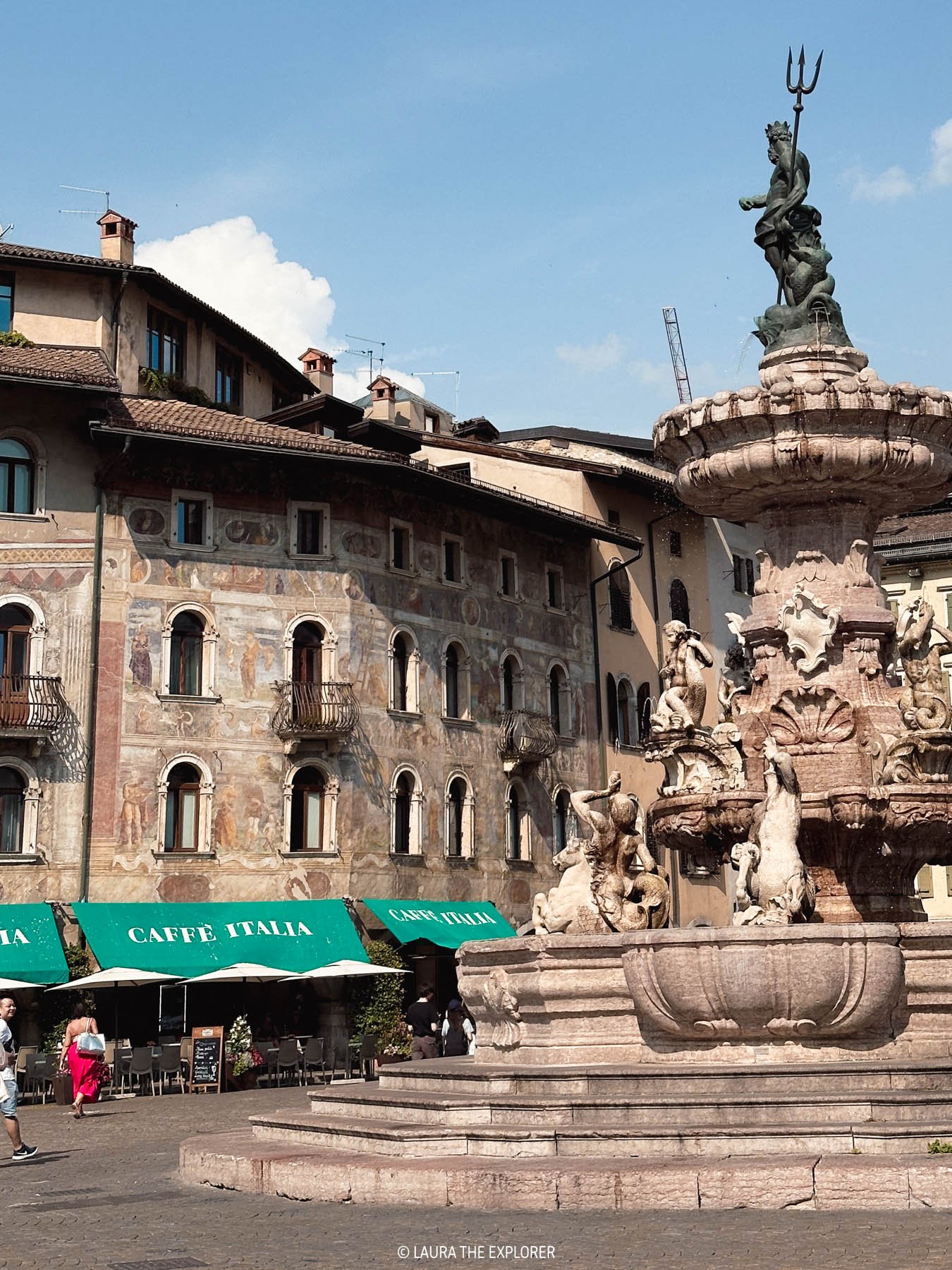Visit the Spectacular Dolomites (in June)
June is the best time of year to visit the Dolomites. The early summer season is marked by picturesque wildflower filled meadows that can be enjoyed over long, pleasantly warm days thanks to the extended daylight hours at this time of year.
It’s also early enough to beat the peak summer crowds, but late enough that the snow has cleared and chairlifts have opened - it’s just the perfect time to hit some of the iconic Dolomites sights such as Alpe di Siusi, Tre Cime di Lavaredo and the Val di Funes.
Read on for all details on why you should plan to visit the Dolomites in June.
A quick heads up: This post may contain affiliate links.
I only ever recommend products or services that I use (and love!) personally. You won’t pay anything extra if you make a purchase through one of these links, but we’ll get a small commission which helps keep the blog running. Thanks for your support!
THE DOLOMITES
The Dolomites offer some of the most picturesque mountain scenery in the world. From the snow-capped peaks, rolling green meadows and sparkling blue lakes to the world-class dining, fascinating historical landmarks and plethora of wellness retreats, there’s something to suit all tastes. Popular with European holiday makers for years, it’s easy to see why the Dolomites is now becoming a must visit destination for travelers from around the world.
But with this explosion of popularity comes some difficulties. The small villages and windy mountain passes weren’t set up for such a volume of tourism, and the peak summer season of July and August is notorious for traffic congestion, booked out accommodation and overcrowded trails.
So how do you experience the best of the Dolomites, and skip these downsides? By visiting off-peak of course! We spent the month of June exploring the Dolomites and couldn’t recommend it more! Here are our personal recommendations and all the things you need to know about visiting the Dolomites in June.
SO WHY VISIT THE DOLOMITES IN JUNE?
FOR THE WILDFLOWERS
June is peak wildflower season in the Dolomites - think rolling meadows filled with multi-coloured blooms, to carpets of buttercups, to roadsides adorned in windswept florals. It really is the most beautiful time of year to experience some of the most picturesque spots in the Dolomites, such as Alpe di Siusi, Seceda and the Val di Funes.
Wildflowers in the Alpe di Siusi in June
FOR THE LONG DAYLIGHT HOURS
With the longest day of the year occurring each June, this time of year is perfect to make the most of the early morning and late evening light. The long daylight hours give much more flexibility in your itinerary. Hit the trail early without needing a head lamp, or start in the late afternoon with the whole evening ahead of you.
FOR THE ROAD ACCESS & CHAIRLIFT OPENINGS
One of the best things about visiting the Dolomites in June is that it’s the sweet spot for everything opening up, but without the crowds. Exact dates vary depending on that year’s snowfall, but typically chairlifts to popular Dolomites locations such as Seceda, Alpe di Siusi, Lagazuoi and more open from late May to early July making access to these mountains much easier. The Auronzo toll road to access the Tre Cime di Lavaredo hike also opens in June.
TO SKIP THE CROWDS
Experienced travelers know that shoulder seasons are where it’s at for the best balance between conditions and crowds. Whilst the weather might not be as reliable and hot as peak summer, visiting the Dolomites in June means the crowds are significantly lower than in July and August. I’m happy to throw on an extra layer if it means I’m not fighting the crowd up a trail, stuck in traffic, or queuing for a gondola!
TO EXPERIENCE THE RIFUGIOS
June is a great time of year to experience staying overnight in a rifugio! Whilst the most popular rifugios do book out, it’s much easier to find space in June than it is in July and August. Staying in a rifugio is also a great option for catching a sunrise or sunset up in the mountains. The long daylight hours can mean an early start if you want to catch the sunrise, but by staying in a rifugio you’re already up the mountain – sometimes the best views are right out the rifugio windows!
Early morning at Rifugio Lavaredo, under the Tre Cime
FOR OPTIMUM LAKE LEVELS
With the winter’s snow just melted, the lakes of the Dolomites are at their best in June! Full to the brim, the high lake levels make the most picturesque time of year to visit some of the most popular lakes such as Lago di Sorapis, Lago di Limides and Lago di Carezza. By Autumn (Fall), lake levels can get really low, with Lago di Limides even drying up if it’s a dry summer season!
A beautiful June afternoon at Lago di Carezza
LOGISTICS TO CONSIDER FOR JUNE IN THE DOLOMITES
HOW TO GET TO THE DOLOMITES IN JUNE
BY AIR
The Dolomites alpine landscape is what makes it such an appealing destination, but the mountain ranges and small villages don’t lend themselves to a big international airport!
To arrive by air, you’ll need to fly into one of the airports that are located a 2-3hr journey away from the actual Dolomites mountains. The best airport options are Venice, Verona or Milan in Italy, or Munich in Germany.
From there, you’ll need to either to rent a car or connect via train or coach bus (ie. Flixbus) to the main hubs of Bolzano (Bozen), Bressanone (Brixen) or Cortina d’Ampezzo. Rental cars from Germany are typically allowed into Austria and Italy but check your T&Cs as you’ll need to consider the motorway vignettes (toll-road passes)!
BY RAIL
The Brenner Railway is a main railway line that provides a strong link from Germany and Austria down to the Italian Peninsula. This makes it very easy to arrive in the main hubs of Bolzano (Bozen) or Brixen (Bressanone) from destinations in both the North (Munich, Innsbruck) and the South (Verona, Milan).
From Bolzano or Brixen, there are further rail connections around to the Val di Pusteria. Otherwise, Bolzano and Brixen are well connected to the eastern Dolomites region by the SudTirol bus system, and Bolzano is a main hub for rental cars (though there are various rental car outlets throughout the Dolomites).
DRIVING IN THE DOLOMITES
Whilst renting a car is not always the best plan for Italy, the Dolomites is one region where you’ll want to seriously consider a rental car. You own transport is definitely the easiest way to get around the Dolomites. With most attractions located up in the mountains, having a car will make everything a lot more accessible, especially on a tight itinerary.
Why not take a Road Trip from Lake Garda to the Dolomites!
The Dolomites are a popular place for cycle races. Events such as the Giro d’Italia, Maratona delle Dolomiti and other occur from May and through the summer, resulting in closed roads including major mountain passes. When this happens, detours can be quite extensive, so keep an eye for signage detailing upcoming closures.
However, you’ll find traffic a lot easier in June than in July and August when notorious traffic jams occur. The windy mountain passes and small villages are not set up for the high volume of traffic that descends over the peak summer season, and visiting the region in June helps avoid adding to congestion and over-tourism.
PUBLIC TRANSPORT IN THE DOLOMITES
The Dolomites are well serviced by public transport, with the SudTirol and Trentino bus and train systems servicing the western and southern regions of the Dolomites, and Dolomiti bus servicing the eastern Veneto region.
However, there are a few things to be aware of when planning to use public transport in the Dolomites. Thanks to the many mountain passes connecting the towns and valleys, many of the bus routes are seasonal, with bus services pausing over the winter when roads are affected by snow.
Luckily, June is the time when most bus routes start up again for the summer season, making it completely possible to navigate the Dolomites by public transport. Be aware though that getting around by public transport will be more limiting than using a rental (or private) vehicle. It’s often necessary to make a connection or two to move between places and schedules will restrict what time you can arrive or depart from the trails (sunrise or sunset outings will be difficult).
BARS, CAFES & RESTAURANTS IN THE DOLOMITES
The Dolomites are a seasonal destination, with busy winter and summer seasons. This results in the shoulder season being significantly quieter, and many businesses take the opportunity to close for the quieter periods. Further to this, some businesses only target the summer season, closing their doors completely for the rest of the year.
But the good news – by June most restaurants and mountain huts are opening their doors for the summer season, and you shouldn’t have any trouble finding a spot to eat!
The Dolomites also sticks to the more traditional Italian opening hours, with supermarkets and other shops typically closing over the lunch period.
If you’re planning on popping into the huts (rifugios) up in the mountains, these are generally open for lunch, but not for dinner, unless you’re booked to stay overnight.
WEATHER IN THE DOLOMITES IN JUNE
Our experience of the weather in the Dolomites in June was generally warm and pleasant, as to be expected at the start of summer, however it can be a bit changeable with bright sunny balanced by a few showery days.
In general, we found the mornings to be clear and sunny, clouds and/or rain to roll through in the afternoons, before clearing again in the evenings. It was a good excuse to hit the trails early and make the most of the beautiful, clear mornings!
The altitude also dictated the temperatures.
Down in the valleys we had daily highs in the mid-20s (°C) / 70s (°F) during the days, dropping down to around 10°C / 50°F overnight. However up on the mountains, we had highs of around 18°C / mid 60s (°F), dropping down to around 5°C / 40°F or lower overnight.
WHAT TO WEAR IN THE DOLOMITES IN JUNE
Temperatures in the Dolomites in June range from warm sunny days of 20 (°C), down to chilly single digits overnight - especially as you get higher in altitude!
Whilst your typical Italian summer packing list might be full of light cotton dresses, linen shirts and tailored shorts, packing for the Dolomites is quite different and you’re going to need to be prepared for all sorts of weather. After all, you don’t want to be that person who needed an alpine rescue team to pluck them off the trail thanks to completely inappropriate attire!
LAYERS
Pretty much every hike we went on involved a fun game of adding and removing layers! If you’re hitting Tre Cime di Lavaredo, Lago di Sorapis or the Adolf Munkel Trail whilst the sun is out, then a single layer could be perfect. But if the clouds roll in or a breeze picks up, you’ll definitely need to start adding a mid-layer and jacket!
WARM CLOTHING
The Dolomites are up at altitude, so there’s no humidity and conditions can change quickly! If you’re for sunrise on a clear morning, or spending a night in a rifugio, the temperatures can be surprisingly cold, even when the weather is clear. A warm insulated jacket is an essential item in the Dolomites.
RAIN JACKET
Don’t set out for the day without your rain jacket when in the Dolomites. Even when the weather forecast is perfectly clear, the mountainous region is famous for its afternoon thunderstorms that suddenly roll through.
GLOVES & A BEANIE
Not your usual summer holiday essentials, but I used gloves and a beanie multiple times in the Dolomites in June. Watching the sunset up at Rifugio Lavaredo, circumnavigating Lago di Braies at the crack of dawn, and climbing down the Lagazuoi tunnels were a few of the times I was thankful for these cosy accessories!
Wrapped up awaiting the sunrise at Lago di Braies
SOLID FOOTWEAR
Even if you’re not planning a multi-day hike along the Alta Via 1, hiking boots, trail runners or some rugged sneakers are essential items. Thanks to the recently melted snow and those sneaky afternoon thunderstorms, the trails can get pretty muddy - not ideal conditions for a pair of grip-less or shiny white sneakers!
BUT DON’T FORGET YOUR FLIP-FLOPS
In the Dolomites rifugios, its standard to remove your boots before coming inside, so make sure you’ve got a pair of flip flops, sandals, or even slippers to wear inside! And no one wants to navigate a shared bathroom in socks or bare feet…
SLEEPING BAG OR LINER
Another item if you’re planning on staying overnight in a rifugio is a sleeping bag or sleeping liner. Whilst blankets and a pillow are provided, linen isn’t, so you’re expected to bring at least a sleeping liner. Some places do rent/sell these, but it will cost extra. A sleeping liner is the best option, rather than a sleeping bag, to save on precious weight and space.
CASH
Whilst most of Italy runs on digital transactions, there are still a few places in the Dolomites that require cash. Many rifugios only accept cash thanks to their remote locations and lack of internet coverage. Others that do have internet coverage have now started to utilise mobile credit card readers - but we found that whilst they readily accepted one of our cards (a Visa), they always declined the other (a Mastercard). Moral of the story, come prepared with options!
WHERE TO STAY IN THE DOLOMITES IN JUNE
VAL DI PUSTERIA (PUSTERTAL)
The Val di Pusteria is one of the main thoroughfares to the Dolomites, thanks to the main highway and train line that run through it and is home to the main centres of Brunico (Bruneck) and Dobbiaco (Toblach). The Val di Pusteria is a great base for exploring attractions such as Lago di Braies, Kronplatz and Alta Badia.
We loved basing ourselves at Hotel Scherer as a three course dinner was included in the room rate, and it was easy to get to Lago di Braies for sunrise!
CORTINA D’AMPEZZO
Cortina d’Ampezzo is one of the main centres within the Veneto Dolomites, with plenty of accommodation options and transport connections. Cortina d’Ampezzo is a great base for exploring attraction such as Tre Cime di Lavaredo, Lago di Sorapis, Cinque Torri and the Lagazuoi Tunnels.
B&B Hotel Passo Tre Croci Cortina is perfectly located to hit Lago di Sorapis first thing in the morning!
ORTISEI (SANKT ULRICH)
Ortisei is one of the main centres in the Sud Tirol area of the Dolomites, and along with adjacent villages of Santa Cristina and Selva di Val Gardena is a popular place to stay. Ortisei is a great base for exploring Alpe di Siusi, Seceda, Val di Funes and the Sella mountains.
STAY IN A RIFUGIO (MOUNTAIN HUT)
Rather than just stick to the towns and village, why not see what it’s like to stay overnight in a rifugio – read on for more details on some great first time rifugios to add to your Dolomites experience!
THINGS TO DO IN THE DOLOMITES IN JUNE
TRE CIME DI LAVAREDO
The Tre Cime di Lavaredo hike is one of the most popular activities in the Dolomites. Circumnavigating the iconic three towering peaks, this 10km loop trail features panoramic views of incredible Dolomiti Limestone formations, traditional rifugios full of strudel, hot chocolate and wheat beer, and lots of additional side trails to explore further and get off the beaten track. This trail really has something for everyone.
WHY VISIT TRE CIME DI LAVAREDO IN JUNE?
June is a great time to visit because the access road will have just opened!
From early June, the toll road from Misurina to Rifugio Auronzo opens to the public. Prior to this, the only way to visit Tre Cime di Lavaredo is a long, steep hike up from Misurina. Visiting in June also means longer days, giving you the option to start early when the sun is already up, or start in the late afternoon with plenty of time to complete the loop before it gets dark. Arriving early (or late) in the day is also essential to snagging a highly coveted carpark, and in June you can be a bit more relaxed than in the busiest months of July and August.
OPENING DATE | Early June, depending on snow conditions
TIME REQUIRED | Minimum half day.
COST | The toll road and parking are €30/calendar day
DIFFICULTY | Medium, some steep ascents and descents (but don’t let them put you off!)
PARKING | Via the Auronzo toll road next to Rifugio Auronzo, or near Misurina Genzianella.
PUBLIC TRANSPORT | Yes – buses from Toblach/Dobbiaco with SudTirol bus #444, Misurina and Cortina d’Ampezzo with DolomitiBus #30.
THE SECEDA RIDGELINE
The Seceda Ridgeline is one of the most picturesque views in the Dolomites. The famous jagged peaks almost look like they’re launching themselves up into the sky as they cut the landscape in half – green meadows to one side, crumbling rocky cliffs to the other. But no matter how many photographs you see, it’s impossible to appreciate the scale until you’re standing right there on the edge.
And whilst the ridgeline is the most famous view, there’s plenty of other reasons of visit Seceda too – the mountain huts full of delicious treats, the incredible rock formations at Peiralongia, the panoramic views the UNESCO Balcony viewpoint, and hiking trails in just above every direction.
WHY VISIT SECEDA IN JUNE?
June is the perfect time to visit Seceda as the gondolas will start operating for the season!
The easiest way to get to the Seceda Ridgeline is by taking the Ortisei-Furnes and Furnes-Seceda Gondola/Cable car from the village of Ortisei. Alternatively, the other easiest option is to take the Col Raiser gondola from Santa Cristina and then either walk or take the Seceda chairlift to the ridgeline.
As the gondolas don’t open til 8:30am, if you’d like to reach Seceda for sunrise it is also possible to hike from either Santa Cristina or Selva di Val Gardena, however it is a strenuous uphill hike. To return down the mountain, the last gondolas are at either 17:00 or 18:00 (check the current schedule here) or take one of the various hiking trail routes.
Our recommendation would be to take the gondola up to Seceda (to skip the strenuous uphill) and the take the easier (downhill!) walk back to Santa Cristina, Selva di Val Gardena or Ortisei.
OPENING DATE | Early-mid June
TIME REQUIRED | Half day or whole day.
COST | The Ortisei-Furnes-Seceda gondola system is €30 one-way, or €39,50 return.
DIFFICULTY | Easy
PARKING | Paid parking available at the gondola base in Ortisei (arrive early)
PUBLIC TRANSPORT | Yes – the gondola is a few minutes’ walk from the main Ortisei bus stop.
THE LAGAZUOI TUNNELS
The Lagazuoi Tunnels are one of the most unique activities in the Dolomites. Starting from up the top of picturesque Mt Lagazuoi, these tunnels were created during World War I as part of the battleground between Italy and Austria. Descending over 1km through solid rock, they feature a variety of viewpoints, rooms, and side trails to investigate and get a sense of what it must have been like to be stationed up in the mountains during the war.
WHY VISIT THE LAGAZUOI TUNNELS IN JUNE?
As there’s still a chance of rain in June in the Dolomites (particularly a late afternoon shower!), the Lagazuoi Tunnels are a great option as the hike is literally inside a mountain! Starting just below the Lagazuoi cable car, the hike run exposed along the mountain for a few hundred meters, before the old trenches lead you to the tunnel door. Climb on through, then follow the enclosed stairs down for over a kilometre. Be sure to check out all the side trails, and as long as you’re heading downwards you won’t get lost. Once you emerge from the tunnels there is about 1.5km of regular trail back down to the carpark.
OPENING DATE | Accessible spring to autumn (subject to snowmelt)
TIME REQUIRED | Half-day.
COST | The Lagazuoi cable car is €17,50 one-way
DIFFICULTY | Technical but not strenuous (officially an A/Easy via ferrata). A headlamp and good footwear are essential.
PARKING | Free & paid parking at the base of the gondola – Parcheggio Passo Falzarego
PUBLIC TRANSPORT | Yes - Mid-June through September, Sud-Tirol bus #465 from Corvara and La Villa or DolomitiBus #30/31 from Cortina d’Ampezzo.
SEISER ALM / ALPE DI SIUSI
UNESCO World Heritage rolling meadows of Seiser Alm/ Alpe di Siusi are an outdoor playground – the hiking, (e-)biking, climbing, wellness, food, and photography are all world class. The hardest part about visiting Seiser Alm/Alpe di Siusi is narrowing down what to fit into your day! I’d recommend renting an e-bike and circumnavigating the meadows, with a stop at Malga Sanon for lunch, or strapping on hiking boots and heading up to Rifugio Sasso Piatto or Rifugio Alpe di Tires for a full day hike.
WHY VISIT SEISER ALM / ALPE DI SIUSI IN JUNE?
June is the best time of year to experience the wildflowers in the Seiser Alm/Alpe di Siusi! From May to early July, the meadows are blanketed in a rainbow of flowers, making this one of the most picturesque times to visit the Alpe di Siusi. This famous sunrise photography spot is also a great place to capture the wildflowers, with the impressive Sassolungo and Sassopiatto mountain ranges in the background. Just be sure not to pick the flowers or trespass on privately owned pastures.
OPENING DATE | Year-round.
TIME REQUIRED | Full day.
COST | Seiser Alm gondola is €24,00 return, Ortisei-Seiser Alm gondola €28,00 return
DIFFICULTY | Routes vary – easy to difficult.
PARKING | Plentiful free parking at the base of the Seiser Alm Gondola. Paid parking also available, but in June the free parking is unlikely to fill up.
PUBLIC TRANSPORT | Yes - Easily accessible from Bolzano via Sud-Tirol bus #170 to Seis/Siusi town or via Sud-Tirol bus #350 to Ortisei, then gondolas from either town.
LAGO DI SORAPIS
The hike to Lago di Sorapis might have exploded in popularity recently, but there’s good reason for that – the milky, turquoise waters of Lago di Sorapis are simply mesmerizing. This 12km out-and-back trail (including a loop around the lake) leads through the forest, across glacial melt streams, along cliff edges, and up metal staircases all before arriving at the most green-blue coloured lake nestled under craggy Dolomite mountains. And to top it all off, there’s also a rifugio perfectly located for a mid-hike lunch or beer!
WHY VISIT LAGO DI SORAPIS IN JUNE?
June is the perfect time to visit Lago di Sorapis and see the lake at its fullest! Fed by melting snow, it’s best seen earlier in the season when the water level is high, before it gradually starts to recede over the dry summer and autumn seasons. Also, given the out-and-back nature of the trail, the long summer days mean it’s possible to start early or later in the day and avoid the congestion the trail is getting famous for, particularly in the technical section where queues can form at peak times.
OPENING DATE | Accessible spring to autumn (subject to snowmelt)
TIME REQUIRED | Half-day.
COST | Free
DIFFICULTY | Medium – easy to follow but technical in places.
PARKING | Free parking on the roadside along SR48, or in a dedicated parking lot a further five mins walk up the road.
PUBLIC TRANSPORT | Yes - From June to September, DolomitiBus #30 runs from either Cortina d’Ampezzo or Misurina five times per day.
LAGO DI BRAIES / PRAGSER WILDSEE
The view of Lago di Braies / Pragser Wildsee is pretty iconic. Chances are that the row of red boats floating on the glassy, green lake is one of the first pictures that ‘peaked’ your interest in the Dolomites. But Lago di Braies is more than just a quick snap of a boatshed before heading off to next stop on your itinerary. Spend an hour enjoying the loop walk around the lake and you’ll discover plenty of unique viewpoints of this magical lake that sits perfectly nestled amongst the towering limestone peaks.
WHY VISIT LAGO DI BRAIES IN JUNE?
Lago di Braies is best visited in June to avoid the summer parking restrictions & pricey access permits that come into play over July and August.
Implemented in 2020 to help manage over-tourism, the parking reservation system controls the amount of traffic permitted to access the Pragser Tal Valley (where Lago di Braies is located) during the peak daytime hours. Whilst it’s still possible to access the valley by car outside of the permit hours of 09:30am-4:30pm, or by foot or by bicycle, if you want to visit during the day by car you’ll need to reserve a permit at least 24 hours in advance. The exact dates that a permit is required can be found on the official Lago di Braies site.
OPENING DATE | Year-round
TIME REQUIRED | 1-2 hours.
COST | Free, excluding parking (varies by parking lot, from €6)
DIFFICULTY | Easy
PARKING | Lots of paid parking on arrival in June, pre-booked parking & permit required July-August.
PUBLIC TRANSPORT | Yes - Buses run every 30 minutes from Bruneck/Brunico (Sud-Tirol buses #442, #443, and #439) and Toblach/Dobbiaco (Sud-Tirol bus #442).
MMM CARONES, LUMEN & ALPINN
Take a gondola ride from the Val di Pusteria / Pustertal up to Plan de Carones / Kronplatz Mountain and you’ll discover there’s much more to the Dolomites than just hiking trails and ski slopes!
First up is Messner Mountain Museum (MMM), partially buried in the side of the mountain this museum is worth visit for the stunning architecture alone. Designed by superstar architect Zaha Hadid, the intricate yet solid structure really highlights it’s mountain inspiration.
Around the corner the incredible cantilevered structure that holds Lumen Photography Museum and AlpINN Restaurant appears to float above the clouds.
Pour over the extensive display of mountain photography in Lumen, before settling in for lunch at AlpINN. This cook-the-mountain restaurant was founded on the Mo-Food ethos with a strong focus on sustainable, low-impact cooking.
WHY VISIT MMM CARONES, LUMEN AND ALPINN IN JUNE?
Situated atop the Kronplatz summit, the three attractions of MMM, Lumen and AlpINN should feature on every Dolomites itinerary, especially during June when the weather can be a bit changeable!
Whether it’s to avoid the typical afternoon thunderstorms, or just an unlucky rainy day, there’s no better way to seek shelter than a visit to the beautiful architecturally designed MMM and Lumen Photography Museum.
A lunch at AlpINN will feature only local, seasonal ingredients, and early summer is a great time to visit and taste all the fresh new produce of the Dolomites region!
OPENING DATE | Late May to November, year-round for the restaurant (except a short post-winter closure).
TIME REQUIRED | Half-day.
COST | A combined return gondola+MMM+Lumen ticket is €47,00. AlpINN has both set menus and a la carte dining options.
DIFFICULTY | Easy
PARKING | There’s plenty of free parking at the base of Kronplatz gondola in Riscone.
PUBLIC TRANSPORT | Yes - Easily accessible from Bruneck/Brunico via Sud-Tirol bus #420.1 or #420.2 to the Kronplatz gondola every 10-20 minutes
STAY IN A RIFUGIO
Staying overnight in a mountain hut (rifugio) is a unique experience to have in the Dolomites. Perched in some of the most picturesque alpine locations, staying overnight in a rifugio lets you get a taste of alpine hospitality, hit the trails first (or capture incredible sunsets!) on some of the most popular hikes, or open up the world of multi-day treks that the region is renowned for. The huts in the Dolomites range from basic with shared bunkrooms and simple (but hearty) fare, right through to semi-luxurious with private suites and extensive menus.
WHY STAY IN A RIFUGIO IN JUNE?
June is a great time to stay in a rifugio as its just before the peak hiking season. The most popular rifugios book out really far in advance, so reserving a space in advance is essential, but availability will be much better in June than July/August. Also with the long daylight hours, staying overnight in a rifugio will make getting up for sunrise much easier – the travel time will be significantly shorter from your rifugio in the mountains than down in the towns!
I can personally recommend:
Rifugio Firenze / Regensburgerhütte | Perfectly located for access to the Seceda Ridgeline, this is the spot to stay if you want to capture the iconic sunrise or sunset without the extensive hike. Surrounded by mountains, it has the friendliest staff, an extensive menu, and both private and shared rooms.
Rifugio Lavaredo | There are a few huts to choose from if you want to stay near Tre Cime di Lavaredo, but we picked Rifugio Lavaredo so we could quickly reach Cadini di Misurina for sunset and Forcella Lavaredo for sunrise. Unfortunately, the weather didn’t play ball, but we still had a great stay. The food was a bit more basic here, but the shared rooms were great and the location really can’t be beat!
OPENING DATES | Varies by hut, from late May to late June.
TIME REQUIRED | Overnight
COST | Varies by hut, but plan around €70,00 half-board per person.
DIFFICULTY | Varies by hut, but at least some hiking is usually involved.
PARKING | The majority of huts are not accessible by road, so hiking from the closest trail head is required.
PUBLIC TRANSPORT | Some huts can be more easily accessed via gondola.
THE ADOLF MUNKEL TRAIL
The Adolf Munkel Trail is a great half-day hike in the Dolomites that features epic mountain views, wild-flower filled meadows, and some quintessential rifugio huts for a mid-hike lunch or a cheeky slice of apfelstrudel.
This 3-to-4-hour loop trail runs up through the forest to the sound of cowbells and then along the foot of Geisler-Odle mountain range where you’ll be blown away by the shear cliffs above. After a short, sharp climb, you’ll descend into the expansive alpine meadows where two rifugios are gladly waiting. Finish the day by adding a stop at Chiesa di Santa Maddalena or Chiesa di San Giovanni back in Val di Funes.
WHY HIKE THE ADOLF MUNKEL TRAIL IN JUNE?
Thanks to its (relatively) low elevation, the Adolf Munkel Trail is a great option for June as the snow clears pretty early in the season. If you’re visiting the Dolomites in late spring (late May), this is one hike that you can rely on being clear for hiking. It’s also a great option if you arrive in the Dolomites before some of the gondolas open. The Adolf Munkel trail starts from the easily accessible Zannes carpark via the beautiful Val di Funes.
OPENING DATE | May - November
TIME REQUIRED | Half-day.
COST | Free
DIFFICULTY | Medium – a few uphill sections but not too strenuous.
PARKING | Plentiful parking at Zannes carpark, daily fee of €8.
PUBLIC TRANSPORT | Yes - Easily accessible from Bressanone/Brixen station on SudTirol bus #330, which runs hourly.
READ MORE: Hike the Adolf Munkel Trail
VISIT TRENTO - GATEWAY TO THE DOLOMITES
Technically at the foot of the Dolomites, rather than in them, Trento is a great launching pad for a trip to the Dolomites. In fact, we used it as a base for remote working for a month whilst spending our weekends up in the mountains.
Situated on the main train line (the Brenner Railway) that runs from Verona up to Brenner on the Austrian border, Trento is extremely well connected and a great place to stock up on gear and supplies at bigger stores. It’s also a great destination in its own right. Home to a plethora of castles, picturesque architecture and some fantastic wine, Trento has enough to fill a few days.
WHY VISIT TRENTO IN JUNE?
June is a beautiful time of year to visit Trento, the gardens are in full bloom, wineries throw open their cellar doors, and the San Viglio Festival brings a party atmosphere to the city. Trento is a modern city with a high quality of life, and when the warm summer temperatures arrive everyone gets outside, dining al fresco dining in the city’s piazzas and gardens or cycling the trails up and down the Adige River.
For more information on what to see and do in Trento, check out our article: A Guide to Visiting Trento
This blog post was about:
» Looking for more guides to Italy? Try one of these:
AUTHOR BIO
Laura is a travel addict who’s been traversing the globe for over 15 years. After collecting all that experience, she’s now sharing her travel advice here. When she’s not out-of-office, she’s planning her next adventure and trying to keep her plants alive.
